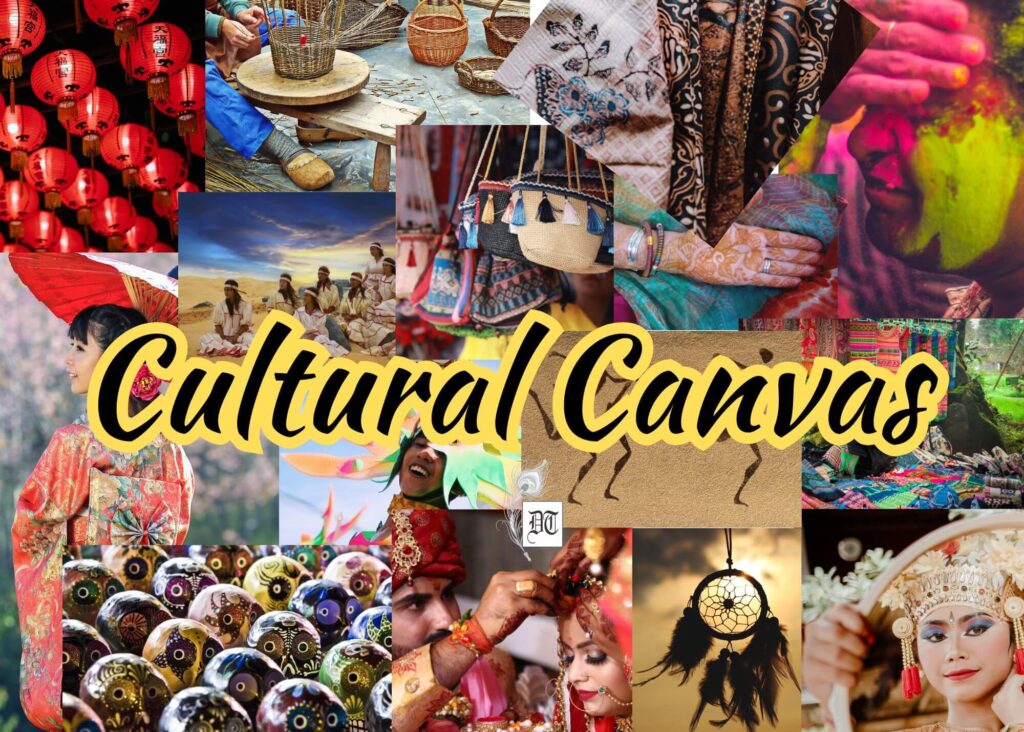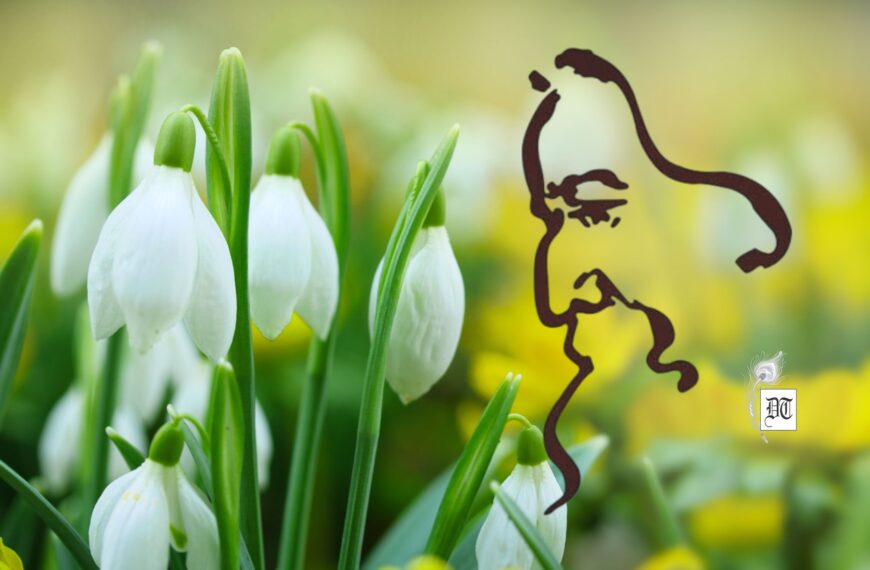Monika critiques three paintings of Raja Ravi Varma, who merged traditional and Western techniques, showcasing his mastery in storytelling, human emotion, and technical brilliance, exclusively for Different Truths.

Raja Ravi Varma, known as one of India’s most celebrated painters, created a unique fusion of traditional Indian aesthetics and Western painting techniques, leaving an indelible mark on Indian art. At a time when colonial influence was reshaping the nation’s cultural landscape, Ravi Varma’s work stood as both a preservation and a transformation of Indian identity. He adapted Western methods like oil painting and realistic portraiture to bring Indian mythology, culture, and everyday life into a new light. His works immortalized scenes from the Ramayana and Mahabharata, along with regal portraits and depictions of Indian womanhood, making them accessible and relatable for a broader audience.
Through his art, he portrayed mythological characters as human, relatable figures with real emotions, thus narrowing the gap between divine and mortal. He elevated the depiction of Indian women, bringing their grace, strength, and beauty to the forefront with realism and dignity that was groundbreaking for his time. His detailed rendering of regional attire, jewelry, and environments offered a visual myriad of 19th-century India’s diverse social and cultural identity.
Here are three of his finest works, analysed and critiqued for their aesthetic, cultural, and technical brilliance. These paintings highlight his skill in storytelling and his sensitivity to human emotion, and his technical mastery, which together cemented his place in the history of Indian art.
Shakuntala Patra Lekhan
In Shakuntala Patra Lekhan (Sakuntala writing a love letter), Ravi Varma captures the quiet yearning of Shakuntala as she writes to her beloved. He carefully positions her in a classical three-quarter profile, a technique derived from Renaissance portraiture, allowing viewers to experience her subtle expressions and emotional vulnerability without direct eye contact. This choice enhances her sense of introspection and longing, drawing viewers into her inner world.

His use of chiaroscuro—the contrast between light and dark—is subtle but effective, highlighting Shakuntala’s soft, expressive face and hands, which are meticulously detailed, while allowing shadows to fall gently around her. This technique brings a lifelike quality to her figure, creating a three-dimensional effect. Ravi Varma also employs sfumato, the blurring of edges, which softens her form and adds to the dreamlike, sentimental tone of the painting.
The detailing in the jewelry, sari, and background architecture is achieved through fine, controlled brushwork, a Western oil painting technique. Ravi Varma’s mastery of oil paints is evident here, as he achieves a delicate interplay of textures that captures the opulence of her attire and the intricate patterns of her jewelry without overshadowing the narrative focus.
While Ravi Varma’s Western-inspired realism grounds Shakuntala’s character in a tangible reality; it also challenges traditional Indian aesthetics, which often preferred symbolic and stylized depictions in art. His focus on naturalism adds a relatable dimension but, in doing so, distances her from her mythological origins, presenting her more as a human than a divine figure—a decision that reimagines mythological characters for contemporary audiences.
The Galaxy of Musicians
The Galaxy of Musicians is an ambitious piece, uniting women from across India, each with her own unique instrument and cultural attire. This painting emphasises cultural unity through diversity. achieved not only through composition but also through Varma’s thoughtful use of color, texture, and form. Each figure is distinct, capturing the subtle nuances of regional identity through posture, facial expression, and costume.

Ravi Varma employs an elaborate palette of earthy tones, soft pastels, and deeper shades that give the painting a cohesive warmth while allowing individual elements to stand out. His skillful brushwork creates fine textures in the sarees, shawls, and jewelry of each figure. This level of detail demonstrates a wet-on-dry layering technique, where thin layers of paint are built up to achieve vibrancy and a sense of texture.
Additionally, Ravi Varma’s understanding of composition shines in his arrangement of figures. He places the musicians in a semi-circle, guiding the viewer’s eye smoothly from one figure to another. The background is rendered in soft, neutral hues to prevent distraction from the primary subjects. By creating a shallow depth of field, he maintains focus on the musicians, allowing each woman’s personality and cultural background to come through without overcomplicating the setting.
The painting, while rich in detail and symbolism has been critiqued for its idealised portrayal of Indian womanhood, presenting an almost utopian view. Though each woman represents a different region, they share a universal beauty and grace, perhaps diluting the complexities and individuality of each culture. This stylisation, however, reflects Ravi Varma’s intent to celebrate Indian womanhood as a unified, idealized concept, rather than focusing on any specific cultural differences.
Jatayu Vadha
Analysis: Jatayu Vadha is one of Ravi Varma’s most dynamic works, capturing a harrowing moment from the Ramayana. The scene’s intense action and emotional gravity showcase his skill in dramatic composition. Here, he chooses a slightly high perspective, emphasising Jatayu’s vulnerability and helplessness as he falls. Sita’s outstretched hand and Ravana’s determined expression intensify the emotional stakes, adding layers of conflict and tragedy.

Technique: Ravi Varma’s use of dramatic lighting enhances the tension in this scene, with light illuminating the central figures—Jatayu, Sita, and Ravana—while the background recedes into shadow. This technique, like the tenebrism of Baroque artists like Caravaggio creates a high-contrast composition that amplifies the emotional intensity of the moment. His use of bold, rapid brushstrokes to depict Jatayu’s feathers and Ravana’s clothing reflects the sense of urgency and movement in the scene.
Colour is equally significant here; the reds and ochres evoke themes of violence and sacrifice, contrasting with Jatayu’s white feathers, symbolising purity and heroism. Ravi Varma’s attention to anatomical details, especially in Ravana’s muscular frame and Jatayu’s outstretched wings, demonstrates his technical expertise and commitment to anatomical realism, likely influenced by his Western training.
Though Jatayu Vadha is revered for its dynamic composition and realism, some critiques focus on its departure from traditional Indian aesthetics, which might have depicted this scene more symbolically. Ravi Varma’s focus on realism brings an immediacy to the scene but can feel at odds with the traditional narrative approach, which often values spirituality over corporeality. Nevertheless, his portrayal makes the story more accessible to the viewer, instilling empathy and a sense of personal involvement.
Footnote
Raja Ravi Varma’s works showcase his extraordinary fusion of Western realism with Indian mythological and cultural subjects, highlighting his unique position as a pioneer of modern Indian art. His mastery of oil painting techniques, particularly chiaroscuro, sfumato, and tenebrism allowed him to bring out realistic textures, depths, and emotional resonance in each piece. While some aspects of his work invited criticism for departing from traditional Indian aesthetics, his ability to humanize mythological figures, celebrate India’s cultural diversity, and infuse storytelling with emotion and technical finesse ensured his lasting legacy. Through his art, Varma not only documented but also elevated the Indian cultural and mythological heritage, creating a bridge between tradition and modernity.
Glossary
1. Chiaroscuro: An Italian term meaning “light dark”. This technique uses strong contrasts between light and dark to give the illusion of volume and three-dimensionality. Often used to create dramatic emphasis and highlight specific areas of a painting.
2. Sfumato: Developed by Leonardo da Vinci, this technique involves subtle blending of colours and tones, creating soft transitions without hard lines. It gives the painting a hazy, dreamlike effect and is often used for soft features, such as skin.
3. Tenebrism: A technique related to chiaroscuro, tenebrism uses extreme contrasts of light and shadow but with more intense, almost theatrical darkness. Often associated with Baroque art, it’s used to enhance the drama of a scene.
4. Wet-on-Dry: A layering technique in oil painting where paint is applied on a dry layer, allowing for fine details and distinct textures. It’s ideal for controlled, precise applications like the intricate patterns in fabrics or jewelry.
5. Perspective: A technique used to represent three-dimensional space on a flat surface. Ravi Varma often used linear perspective, guiding the viewer’s eye to a vanishing point, giving depth to his compositions and creating a realistic spatial relationship between figures and background.
6. Realism: This technique aims to represent subjects as they appear in real life, focusing on accurate detail, proportion, and form. Ravi Varma’s realism is seen in his anatomical accuracy and detailed portrayals of clothing and expression, enhancing the lifelike quality of his figures.
Three paintings sourced by the author from the internet.






 By
By
 By
By
 By
By